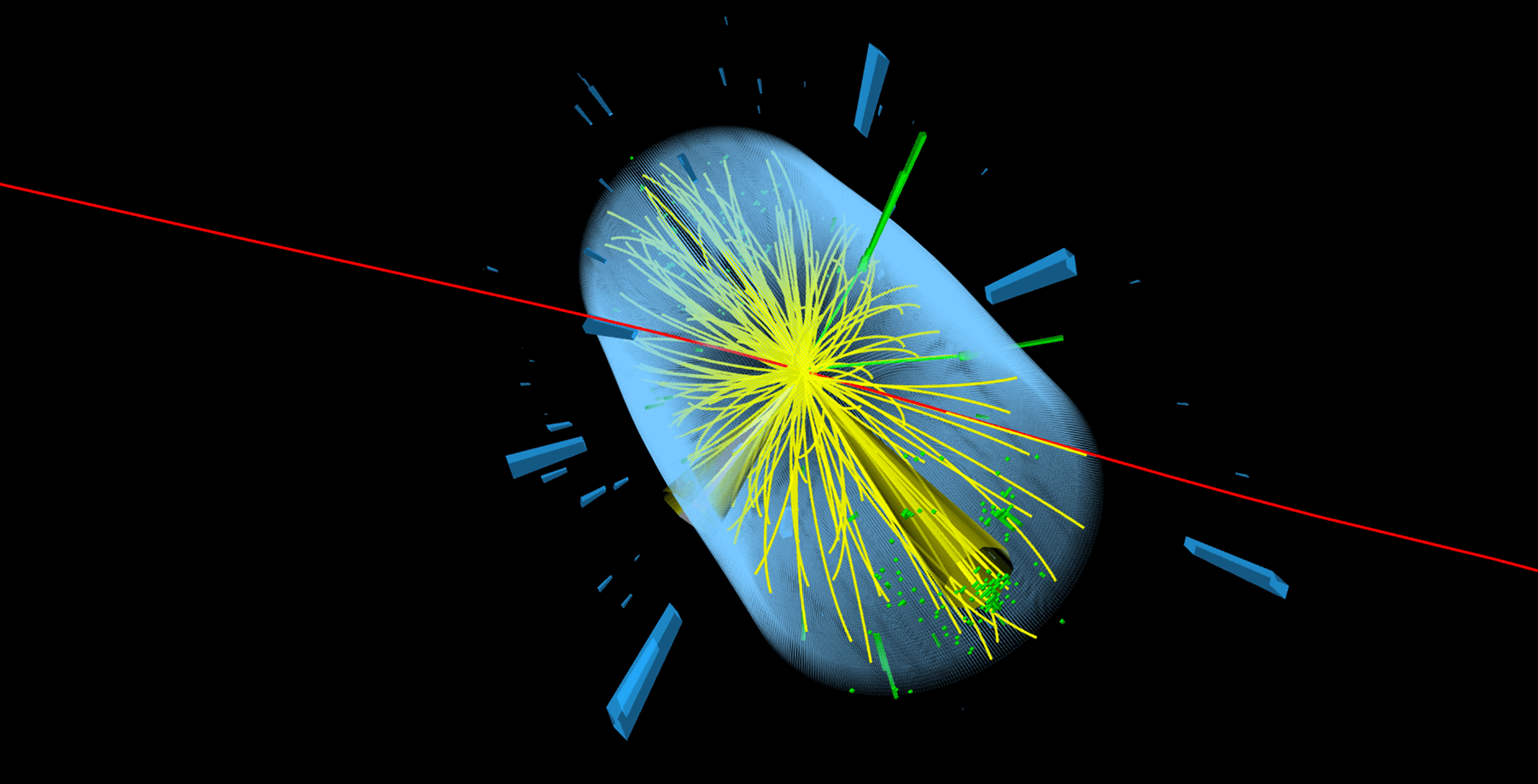Background
When scientists search for new physics, they compare what they observe to what theories predict they will observe. The background is the set of results scientists expect to see. If an experiment sees more instances of a certain type of event (see “Excess”) than they expect to see as part of the background, it might be evidence of new physics.
Confidence Level (CL)
Confidence level is a statistical measure of the percentage of test results that can be expected to be within a specified range. For example, a confidence level of 95 percent means that the result of an action will probably meet expectations 95 percent of the time. When physicists search for a signal of the Higgs boson, they select particle collisions with observed characteristics similar to those a Higgs production would feature. The result of this data selection will always include background events, i.e. ones which did not involve a Higgs boson decay, but are anyway individually undistinguishable from the signal. The existence of the Higgs boson would however increase the number of selected events, so one may compare the number of selected events with the predicted yield from known backgrounds alone, to make a statistical statement about the Higgs production rate. If the number of observed events is close to the background prediction, then one can rule out a sizable contribution from the Higgs boson decay signal, which would have created an excess of events. Given a signal rate and a background prediction, one can compute the probability that a total number of events smaller or equal to the ones observed is seen. Signal rates for which the probability would be smaller than 5% are then said to be "excluded at 95% confidence level". Note that the choice of 95% as a division line between what is allowed or excluded by the data is arbitrary, and has merely historical justification.
Decay channel
Most massive particles like the Higgs boson are unstable and decay into other particles over time. Just as a vending machine might return the same amount of change using different combinations of coins, a particle can decay into different combinations of particles. These sets of secondary particles are called decay channels. If the Standard Model Higgs boson exists, it could decay into several different channels, such as two photons or two W bosons or two Z bosons. Physicists have calculated how often a Standard Model Higgs boson would decay into these different channels depending on its mass. They search for excesses of events in those decay channels, which could indicate the presence of a Higgs.
Event
An event is a snapshot of a collision in the LHC. Because energy is equivalent to mass, highly energetic collisions can create particles more massive than those involved in the collisions (protons, in the case of the LHC). These massive particles quickly decay into lighter stable particles (see “Decay channel”). Physicists study the decay products of collisions to determine what more massive particles were created in the events.
Excess
When scientists observe more of a certain type of event than expected in a data plot, they call that an excess. Scientists measure the statistical significance (See “Sigma” and “Standard deviation”) of excesses to determine how certain they are that they result from new physics and not simply random fluctuations.
Exclusion
If searches for a particle reveal statistically that it is unlikely to exist with certain characteristics (e.g. a particular mass), those characteristics can be excluded. This narrows the search parameters within which the particle might be found. Establishing such exclusions is important in the search for undiscovered particles.
Look-elsewhere effect (LEE)
When physicists see more of a certain type of event than predicted, they must consider the look-elsewhere effect in determining the statistical significance of that excess of events. To calculate the look-elsewhere effect for a certain observation, scientists take into account the probability of seeing something similar in any particular spot over the mass range in question. The chances of a statistical fluctuation causing an excess of events at one point on a plot are lower than the chances of a statistical fluctuation leading to an excess of at any point in a range of points on a plot. Other things being equal, the smaller the range one considers, the smaller the look-elsewhere effect. [Read more.]
Standard Deviation / sigma
The standard deviation describes the spread of a set of measurements around the mean value. It can be used to quantify the level of disagreement of a set of data from a given hypothesis. Physicists express standard deviations in units called “sigma”. The higher the number of sigma, the more incompatible the data are with the hypothesis. Typically, the more unexpected a discovery is, the greater the number of sigma physicists will require to be convinced.
Standard Model
The Standard Model is a collection of theories that embodies all of our current understanding about the behaviour of fundamental particles.
Blind analysis
To avoid bias when analysing new data, physicists perform the analysis “blind” — that is, without seeing how the application of various selection criteria would affect the result before the analysis is complete. [Read more.]




